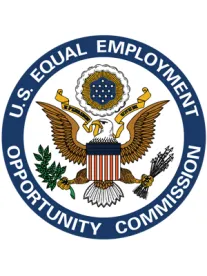The Equal Employment Opportunity Commission’s Fiscal Year 2016 Performance and Accountability Report (“PAR”) shows a slight decrease in the amount of monetary recoveries by the EEOC in litigation and other enforcement activities compared to 2015, as well as its struggles with the data available to it. The report covers the period October 1, 2015, through September 30, 2016.
In total, the EEOC recovered $347.9 million in pre-litigation relief for those who work in the private sector and an additional $52.2 million through its litigation efforts. The EEOC secured $82 million for federal employees and applicants through its federal sector process. The EEOC’s total claimed monetary achievements for FY 2016 was $482.1 million.
Litigation Recoveries and Filings Down
According to the PAR, the EEOC resolved 139 merit lawsuits in FY 2016, for a total monetary recovery of $52.2 million, down from the $65.3 million recovered in FY 2015.
The Commission filed 86 merit lawsuits in FY 2016, a decrease from the 142 filed in FY 2015. The top bases on which the EEOC sued were:
-
disability (35),
-
gender (25),
-
retaliation (24),
-
race (10),
-
religion (6),
-
national origin (5),
-
age (2), and
-
genetic information (2).
Pre-Litigation Enforcement
EEOC’s monetary recoveries for private sector employees came primarily from pre-litigation early mediation, settlement, or conciliation. As was the case in the 2015 PAR, the 2016 PAR emphasized the high priority the EEOC has put on redressing alleged systemic discrimination. The EEOC resolved 273 systemic investigations, with a total recovery of $20.5 million.
The Commission highlighted several million-dollar pre-litigation settlements that provide further insight into its areas of focus:
-
A $5.05 million conciliation where the EEOC alleged the employer failed to accommodate employees who requested the option to sit during their shift as an accommodation;
-
A $1.7 million Americans with Disabilities Act settlement where individuals with disabilities allegedly were denied reasonable accommodations due to an employer’s policies that did not allow intermittent leave or additional leave of absence;
-
A $1.4 million sexual harassment conciliation; and
-
A $525,000 resolution where the EEOC alleged the employer segregated females into administrative occupations.
EEOC’s Challenges with Data
The EEOC listed as an accomplishment its September 29, 2016, implementation of a new EEO-1 report that will require reporting employers to annually provide summary workforce pay data beginning March 31, 2018. According to the EEOC, the new data provided by these reports will strengthen its abilities to enforce laws against pay discrimination. However, the EEOC’s Inspector General’s portion of the PAR noted that for years the EEOC’s data analysis strategies and tactics have been wanting. The Inspector General pointed out that the EEOC has struggled to use data already available to the Commission.
Looking Forward
The PAR did not mention the results of the presidential election of Donald J. Trump. However, it contemplated that the EEOC would be operating with level funding for the foreseeable future and the Commission would have success without an increased budget. According to the PAR, the EEOC’s digitalization efforts — the Digital Charge and Online Charge Status systems — would free investigators from the time-consuming task of responding to inquiries and allow additional time for direct investigation activities.




 />i
/>i

